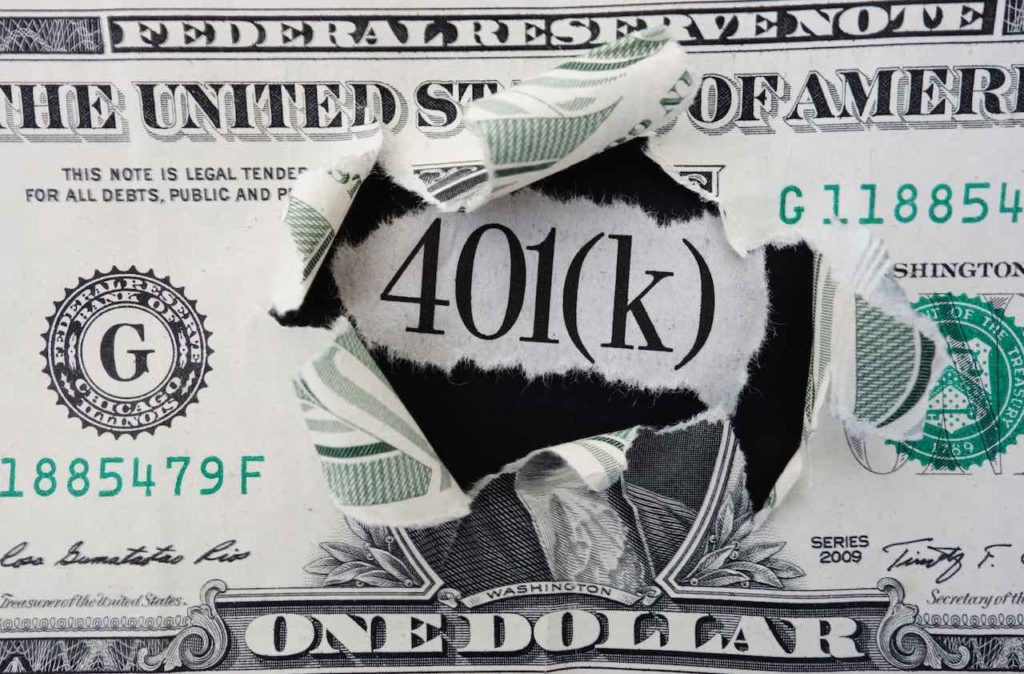More and more retirement savers have their entire 401(k) account in just a single mutual fund, and investment advisers are fine with it.
Last year, for the first time, more than half of Vanguard’s 4.6 million retirement account participants were invested in a single target-date retirement fund, according to an analysis by the mutual fund giant.
This may sound anathema to an industry that preaches the value of diversification, but these funds are designed to provide it for investors in one package. And after years of trying to manage their own investments, savers are finding it easier to pick one fund that does the job, even if the fees may sometimes be higher.
The stakes are high that workers choose wisely because they’re increasingly in charge of their own retirement savings, with traditional pension plans rare and pressures mounting on Social Security.
“People need to get two things right: They need to save enough, and they need to invest appropriately,” said Jean Young, senior research analyst with the Vanguard Center for Investor Research. “That sounds easy, but it’s not.”
Target-date retirement funds can help with the second of those responsibilities. Savers pick a fund pegged to the year they hope to retire. If the date is far away, the fund loads up on stocks and other high-growth investments. As the targeted year approaches, the funds automatically move into more conservative investments so that savers don’t get wiped out by a plunge just before retirement, like what occurred in 2008.
It’s a far cry from a couple decades ago, when one of the biggest selling points for a 401(k) plan was all the choice it afforded investors. Want a fund that specializes in just high-risk foreign bonds? How about stocks of tiny companies from Europe? Or technology stocks? No problem, you were in control.
Ultimately, many investors felt overwhelmed by the amount of choice, and that led some to have either too much or not enough risk in their 401(k). The migration into target-date funds has helped investors avoid these two danger zones of investing.
In 2008, for example, 11 percent of 401(k) participants had nothing at all invested in stocks, according to Vanguard’s records. That may sound like a good thing, considering the beating stocks took during the financial crisis, but anyone who didn’t own stocks missed out on the ensuing bull market, one of the best in history. Plus, conventional thinking says even the oldest savers should have a slice of their nest eggs in stocks. That’s because retirement can last for decades, and stocks can provide some of the best protection against inflation.
Last year, thanks in part to the rise of target-date funds, only 3 percent of participants had nothing invested in stocks.
Likewise, the percentage of savers who have their 401(k) invested entirely in stocks has declined. An all-stock portfolio can produce big gains over the long term — but only if investors resist the temptation to sell low during a downturn. That ends up being more difficult than many investors envision, and target-date funds help cushion the blow by keeping at least a small portion of investors’ nest eggs in bonds.
Part of the migration into target-date funds has happened unconsciously because some employers automatically enroll their workers into them. But nearly as many workers who have their entire 401(k) in a single target-date fund are there voluntarily, rather than automatically enrolled.
Fees for target-date funds have been trending down in recent years, falling to an average of $66 for every $10,000 invested last year, compared to $71 a year earlier and $103 in 2009, according to Morningstar. Investors generally paid a bit less for mutual funds and ETFs, which charged an average of $52 for every $10,000 invested last year. But with target-date funds, investors don’t need to keep track of their investments to rebalance their portfolios periodically.
Investors should also be aware that some target-date funds take on more risk than others, with bigger portions of stock at each age milestone. They need to be comfortable with their fund’s level of risk.
Among the other trends that Vanguard found when looking at the 1,900 plans and 4.6 million participant accounts for which it keeps records:
— Two thirds of plans, 67 percent, allow workers to begin contributing immediately to the 401(k), rather than waiting for months or a year. That’s up from a little more than half, 52 percent, at the tail end of the Great Recession in 2009.
— Savings rates are holding steady. Including the match that employers provided, the typical worker saved 9.6 percent of pay last year, down a tick from 9.7 percent a year before.
— Savers are content to be patient. Only 8 percent of participants traded within their accounts last year, whether moving money from stock funds into bond funds or vice versa. The percentage has been on a long-term trend lower, down from 14 percent a decade ago.
(AP)











